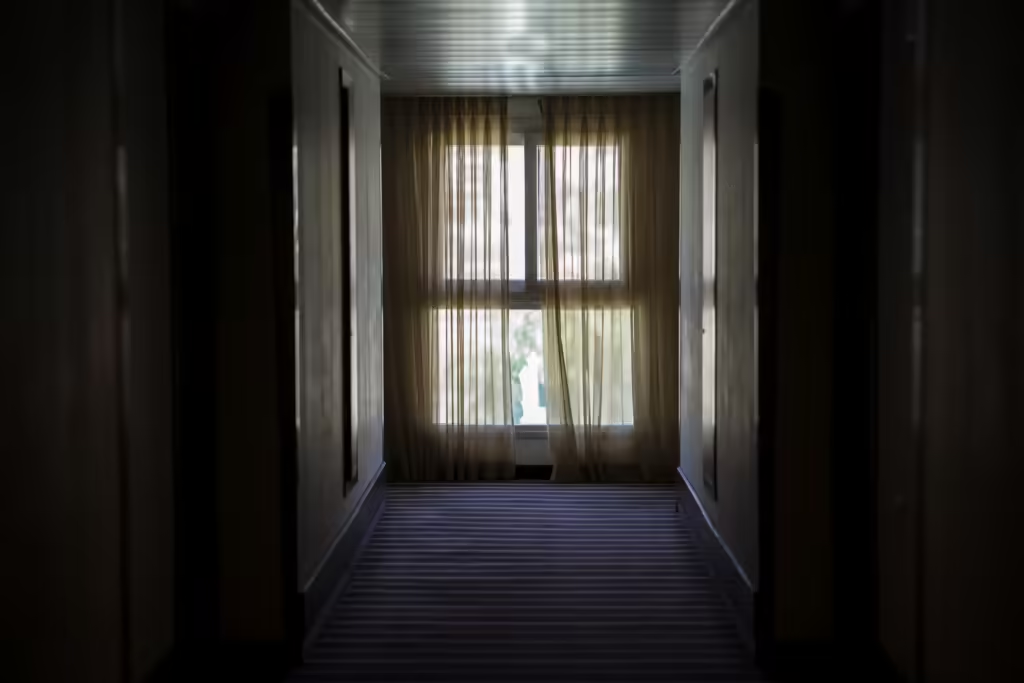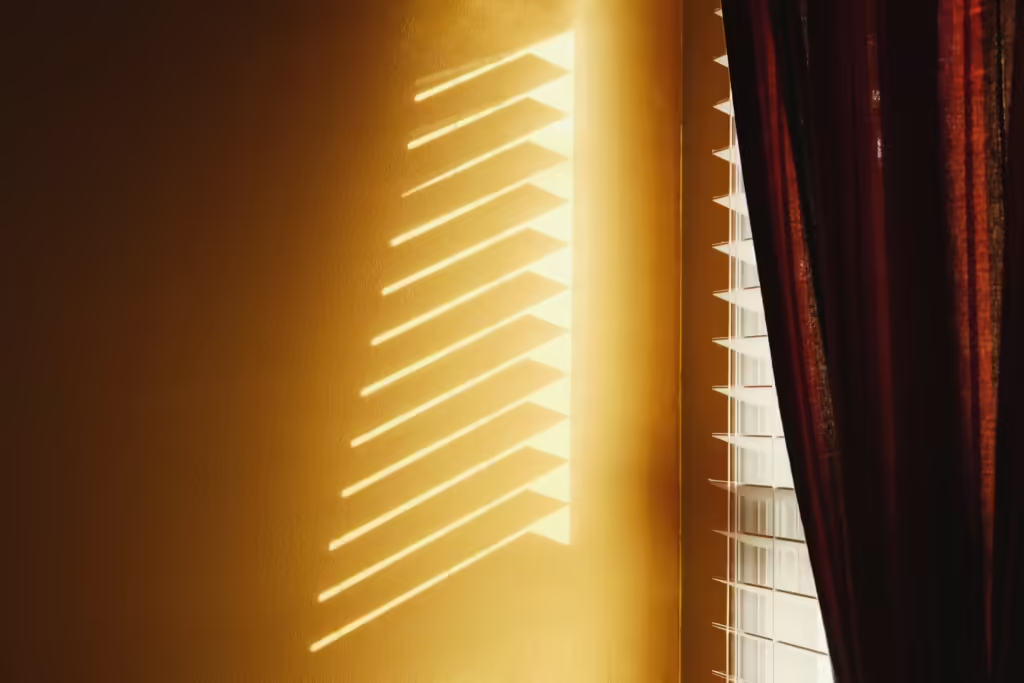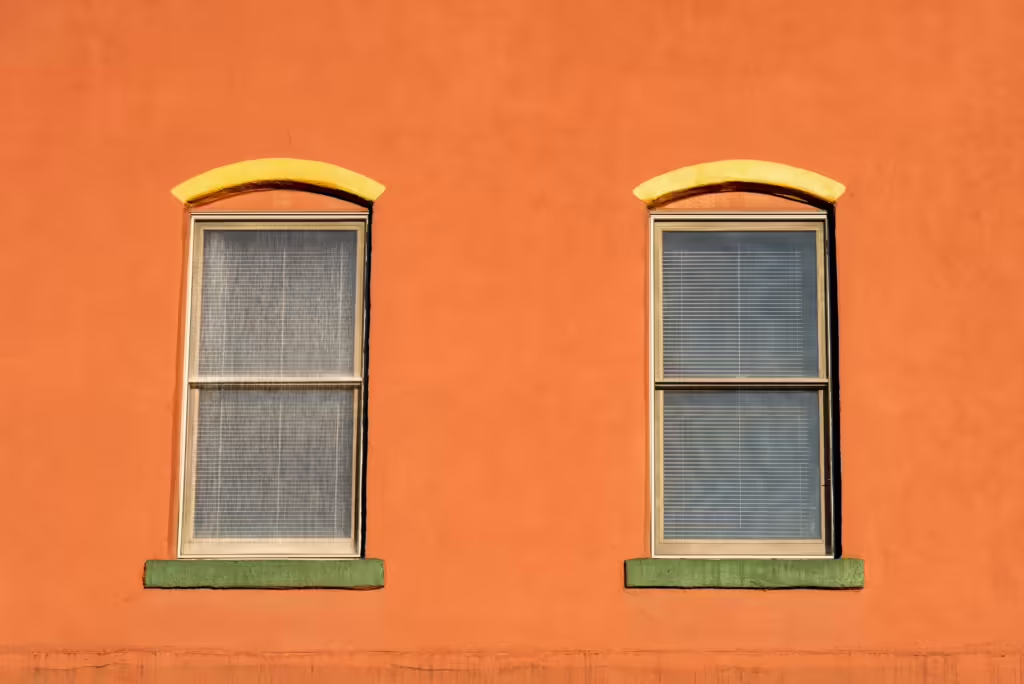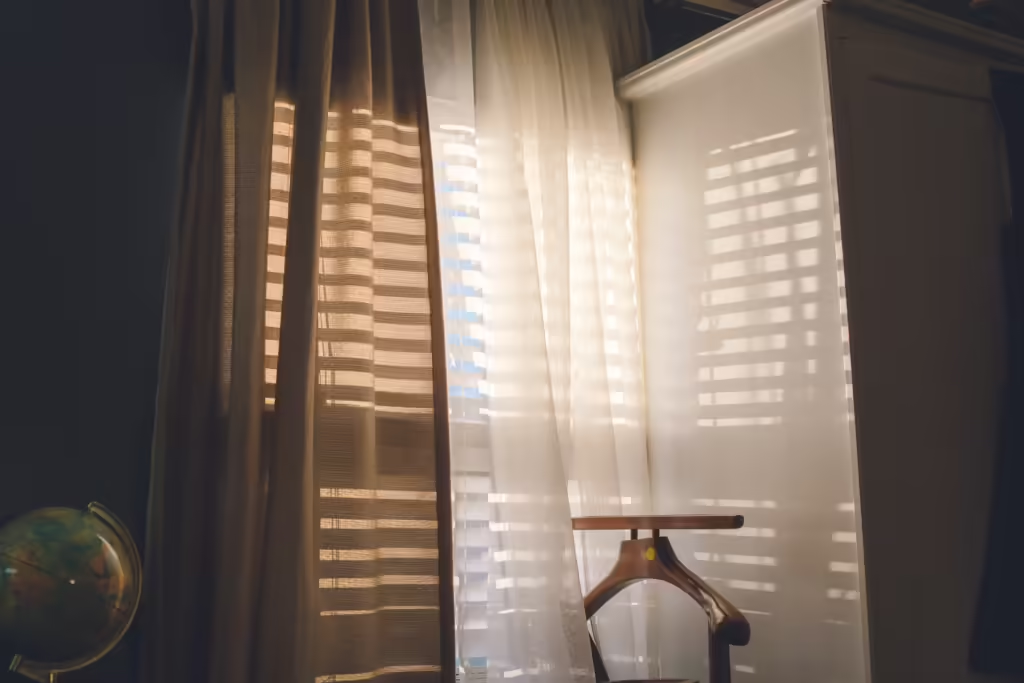Choosing between blinds vs. shades goes beyond making your home look more aesthetically pleasing. The right treatments can play a major role in insulation and boosting everyday comfort. Since each home has different needs, understanding the differences between these two will help you make the wisest decision for your property.
What Are Blinds?
They are rigid window treatments that consist of multiple horizontal or vertical vanes or slats. You can raise or tilt these slats to adjust how much light enters your room. They are suitable for people who want variable daylight throughout the day without compromising privacy.
The average cost for professional installation of blinds typically ranges from $200 to $1,350, depending on the style and complexity of installation. For example, installing blinds on eight windows might cost approximately $640, which breaks down to about $80 per window, comfortably within this range.
Materials Commonly Used for Blinds
Wood materials are popular because they provide a natural and warm appearance. While visually pleasing, wood is prone to warping if not maintained regularly. Many people prefer aluminum as a more moisture-resistant option.
It’s a chic, lightweight, and highly durable choice for homes where humidity is an issue. Vinyl is also an option, especially if you are considering installation in high-humidity areas like kitchens and bathrooms.
Types of Blinds
The three most common types of blinds are Venetian, Vertical, and Mini. Here are the must-know facts about each of them.
- Venetian: Horizontal or Venetian blinds are one of the most stylish options for your bedroom and living room. They feature horizontal slats that you can tilt to manage light.
- Vertical: These are made up of long, vertical vanes and are typically used to cover large windows or sliding glass doors.
- Mini: They are the smaller-scale version of Venetians, featuring narrower slats. Mini blinds are practical in compact spaces or on windows with limited room around the frame.
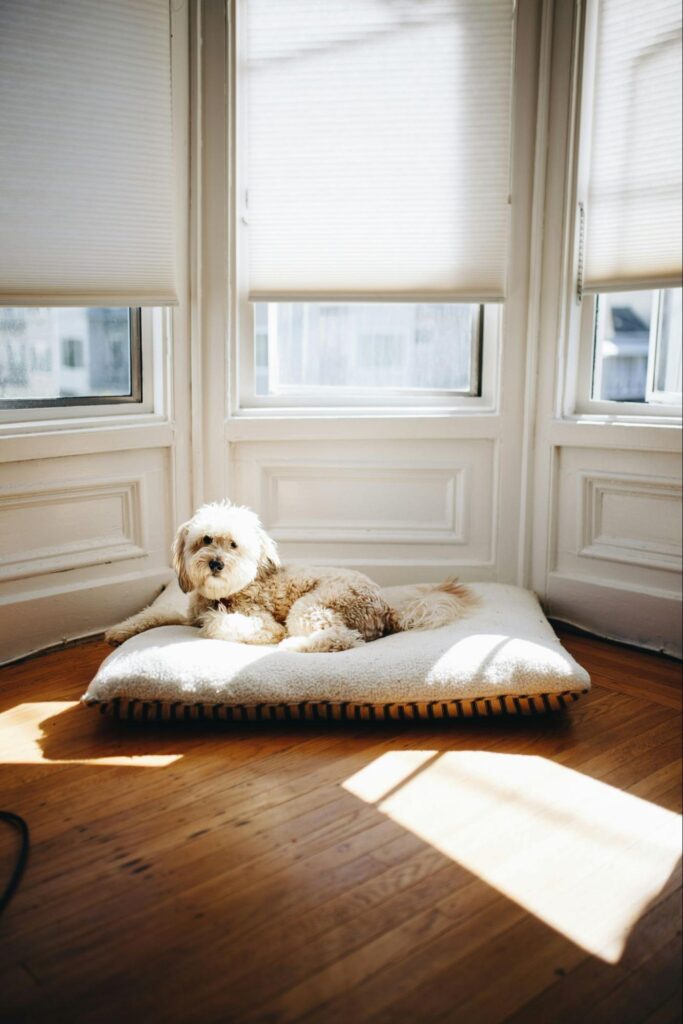
What Are Shades?
They are another popular type of soft window treatment made from a continuous piece of fabric or material that fully covers a window when lowered. Unlike blinds, they do not feature vanes or slats. This gives them a smooth and seamless look that fits snugly within the window frame. When raised, they stack neatly at the top, keeping an organized and clean look.
While they do not allow for adjustable light filtering, you can choose between different opacity levels, from sheer to blackout. Standard shades can cost anywhere from $55 to $250 per window, while the price for a more customized option can climb up to around $2,600. Customized shades can become expensive due to specialized materials, designs, fabrics, or features like automation.
Materials Commonly Used for Shades
Fabric shades are versatile, and you can choose from light-filtering fabrics to blackout materials that block light. Woven wood is also a popular option if you enjoy the natural appearance of sustainably grown bamboo, jute, and reeds.
Cellular or honeycomb shades are often made from polyester fabric. This fabric ensures low maintenance and longevity. Roman shades can be made from different materials like cotton (breathable and lightweight), linen, polyester, and even silk for a refined appearance.
Types of Shades
Typically, you can choose between three types of shades. These include roller, Roman, and pleated or cellular.
- Roller: It’s a simple design. They feature fabric rolled onto a tube at the top of the window. Choose neutral colors like beige for a contemporary and sleek look.
- Roman: As they lower, they form horizontal folds that appear “soft” and elegant.
- Pleated or сellular: Cellular features small pockets of air that can effectively trap cold and hot air. This makes them highly energy-efficient.
Key Differences Between Blinds and Shades
The difference between blinds vs shades lies in how they control light, keep your space private, and save energy. Take a look at this window treatments comparison!
Light Control
Blinds allow you to adjust each slat to dial in the amount of sunlight you want. Shades may allow a soft glow to filter through, but you won’t have the angled control that blinds offer.
Privacy
You can close the blinds completely, but there will still be small gaps visible between the slats. If you are interested in full window covering, shades with a blackout fabric like a polyester blend are a better choice.
Energy Efficiency
Blinds are effective at blocking heat to a certain extent when the slats are closed. However, the gaps between them can still allow warm air to pass through. If you’re worried about energy efficiency, consider cellular for their multi-layer design that can deliver superior insulation.
Aesthetic Appeal
Both can be an attractive addition to your home, and the style preference is all up to you! Typically, blinds appear crisper and more structured, whereas shades are believed to be softer.
Maintenance
Some cleaning, such as dusting and wiping, is required for both. However, for blinds maintenance, you may require more time to clean. Often, the slats should be cleaned individually.
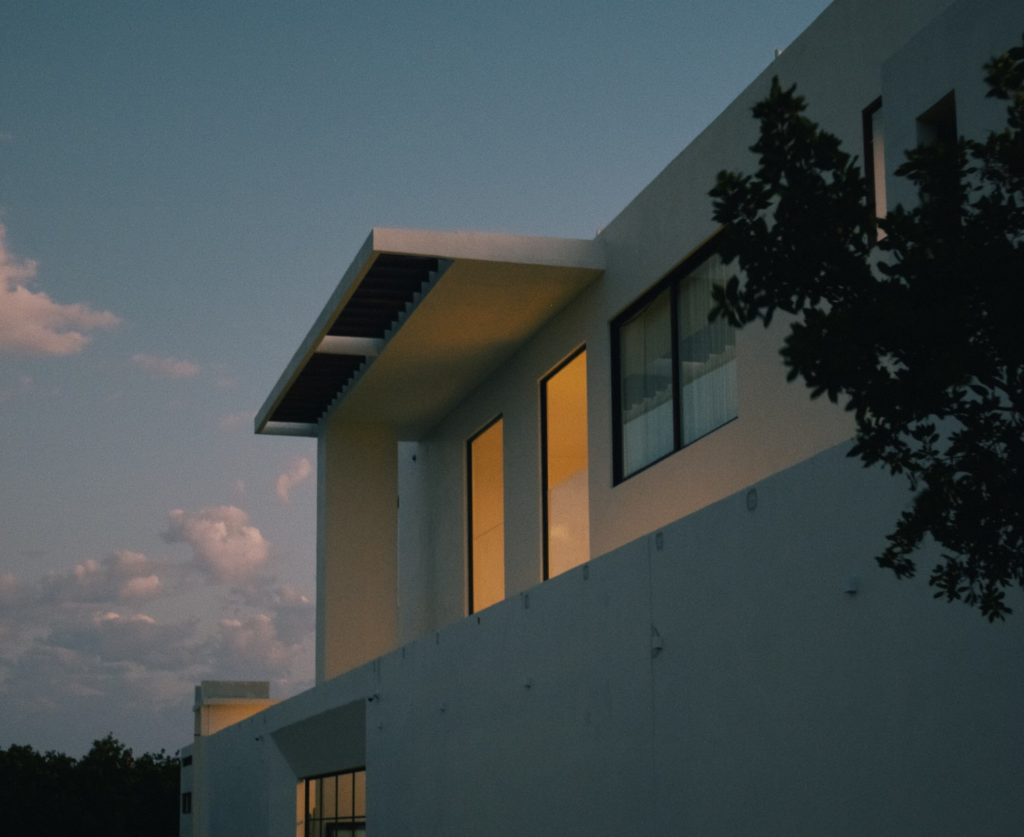
How to Choose Between Blinds and Shades
Shades are often preferred for privacy and thermal protection. For precise control of light, you might choose blinds instead. Also, think about how much time and effort you are willing to spend on maintenance.
Both require some cleaning, but cleaning blinds is usually more time-consuming due to multiple slats, which can accumulate dust. Budget is also an important factor when choosing between the two. Custom shades are the most expensive option, costing approximately $250 to $2,600 per window.
When to Choose Blinds Over Shades
If you prefer precise control over how much light enters your space, choose blinds. They are also a more durable option, thanks to sturdy materials like aluminum.
When to Choose Shades Over Blinds
Shades offer a uniform barrier at the window, so they maintain full coverage and privacy. Furthermore, you might want to choose shades for insulation, particularly cellular types.
Conclusion
When comparing blinds vs shades, both options come with advantages and possible drawbacks. Blinds are great for precise brightness control, while shades offer more coverage and insulation. The choice is ultimately up to you and your home’s unique needs.
If you are considering window treatments but aren’t sure where to start, contact FHIA Remodeling for expert help. Fill out a form and get a free quote today!
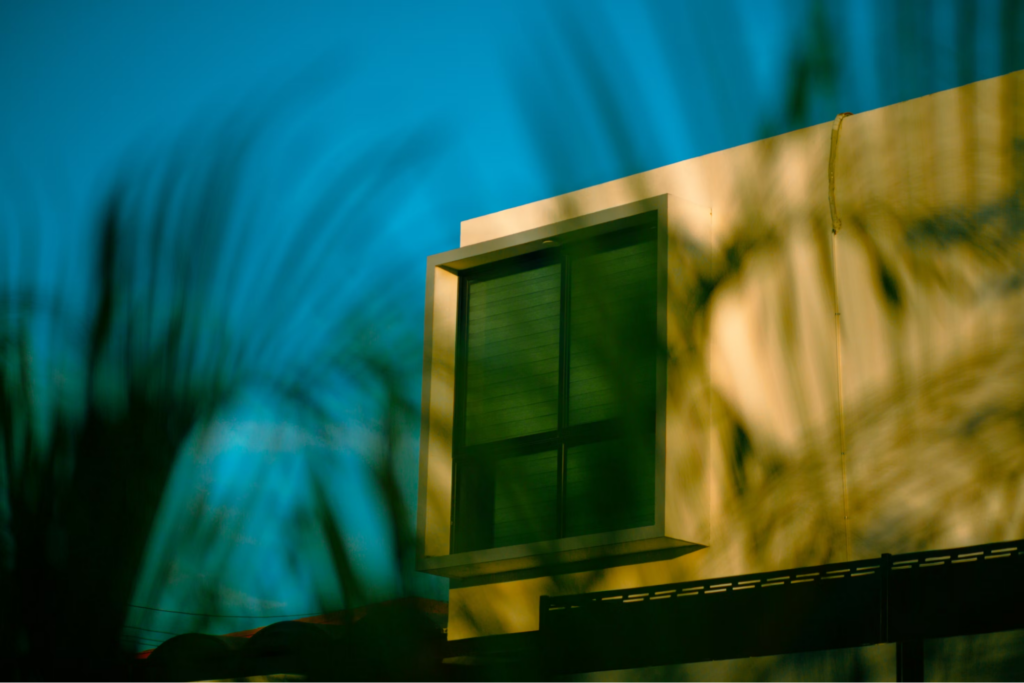
Frequently Asked Questions
What’s the main difference between blinds and shades?
The main difference is in the structure. Blinds feature individual slats you can tilt to manage light. Shades are created from one continuous piece of material that you can lower or raise as needed.
Which is better for privacy: blinds or shades?
One of the main benefits of shades is that they offer full coverage. When you lower shades, there are no gaps between slats (like when using blinds), so it’s harder for outsiders to see in.
Which option is better for controlling the amount of light in a room?
Blinds offer better light control, since you can adjust the slats to let in the right amount. Shades can filter light based on the fabric type you choose, but don’t offer the same angled adjustments.
Are shades or blinds better for energy efficiency?
Cellular shades excel at insulation because they trap air in the honeycomb structure. Blinds can also block some heat when the slats are closed, but they may allow more air transfer compared to tightly woven shades.
Can blinds be more difficult to clean than shades?
Yes, cleaning blinds is usually more time-consuming because dust can gather on each slat. Shades can be easier to clean with light vacuuming or spot-cleaning treatments. Both require regular upkeep.

